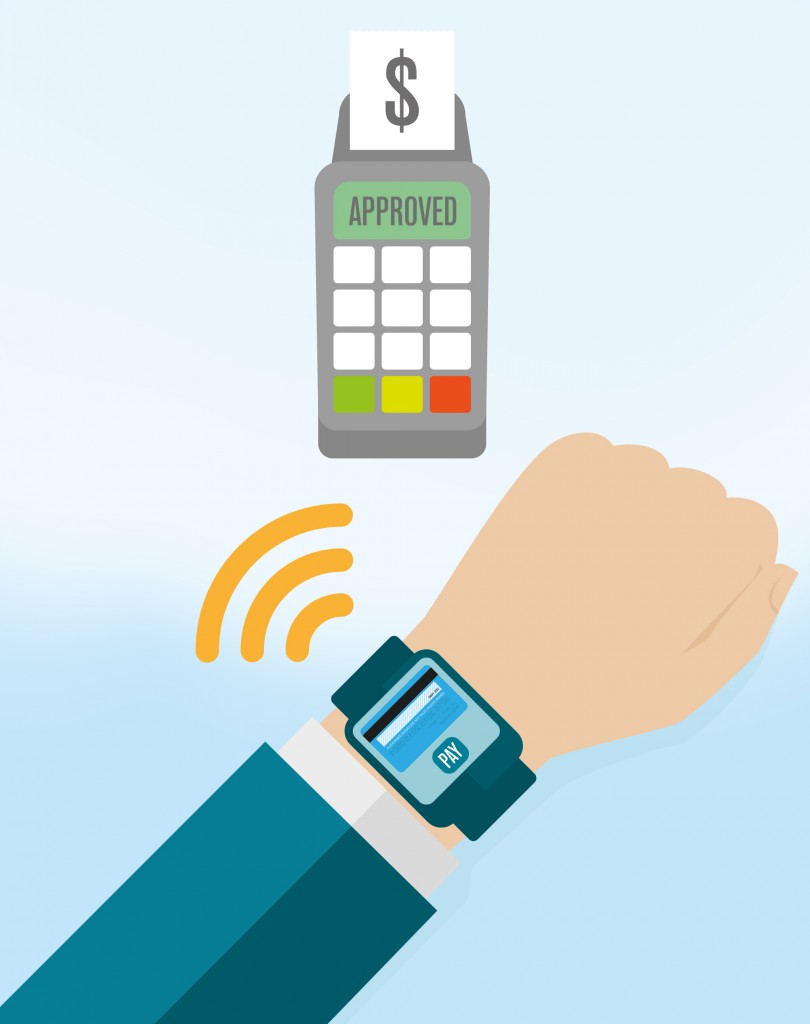From health to entertainment to communication, technology touches every aspect of modern life. Given this growing reliance consumers have with devices, it comes as no surprise that companies are looking towards wearables as the next phase of payment technologies. Some of the popular wearables that are adding contactless payments to the mix are smart watches and fitness trackers.
Last year, MasterCard launched a program to develop more consumer products that facilitate contactless payments and partnered with the likes of General Motors, Nymi, Ringly, TrackR, and fashion designer Adam Selman to achieve their goal. At the beginning of this year, the card brand partnered with financial software company Coin to further develop wearable payment technology, with companies such as Atlas Wearables, Moov, and Omate already signed on to the project.
Wearable payment technologies are transforming everyday items into secure payment methods, and adoption is expected to grow steadily:
- Of the 200 million units of wearables expected to be shipped in 2019, between 30 and 40% of them will have payment functions, compared to 2% today.
- The estimated value of mobile and wearable payments in 2018 is $95 billion.
- By 2018, 50% of consumers in mature markets will use smartphones or wearables for mobile payments.
Let’s take a look at some wearable payment options.
Rings
Kerv is a contactless payment ring that comes in seven different colors. The ring allows consumers to make payments, validates riders on public transit, and unlocks smart locks.
Smartwatches
- Apple Watch has a plethora of features, among which include health monitoring, easy notification access, and of course, compatibility with Apple Pay to let consumers pay with a flick of the wrist.
- Samsung’s smart watch, Gear S2, allows users check messages, listen to music, monitor heartbeats, and much more. The watch facilities Samsung Pay, so users simply have to tap the watch against a compatible device to pay.
Bands
- Disney hopped on board the wearables train to create a true omni-channel experience. Their MagicBands are wristbands that allow visitors conveniently pay for food, get on rides, and access hotel rooms.
- Jawbone UP4 is a fitness band that tracks a user’s everyday movements that also has mobile payment capabilities. Once AMEX cards are authenticated through the Jawbone app, all consumers have to do is swipe their wrist to pay.
- Nymi Band is an authentication tool; it actually uses an individual’s unique heartbeat to verify identity. The user simply wears the band and places a finger on the sensor to authenticate, effectively replacing passwords and PINs. As a beta program, they are exploring contactless payments. To make payments, users would tap the band on a compatible device to pay after their identity has been authenticated.
Clothing
- In partnership with Barclays, British clothing retailer Lyle & Scott created a jacket that wearers can pay with. The payment portion is hidden in the sleeve. Consumers simply tap their cuff and go.
- As part of the aforementioned MasterCard program to develop more consumer products that facilitate contactless payments, Adam Selman is crafting clothing that won’t just turn heads, but will let wearers pay too.
Why should you care?
Consumers have a plethora of options when it comes to how they pay and in turn, will expect omni-channel connections. In other words: a seamless, frictionless experience. As wearable payment devices grow in proclivity and popularity, more and more of your consumers will want to pay with wearables.
